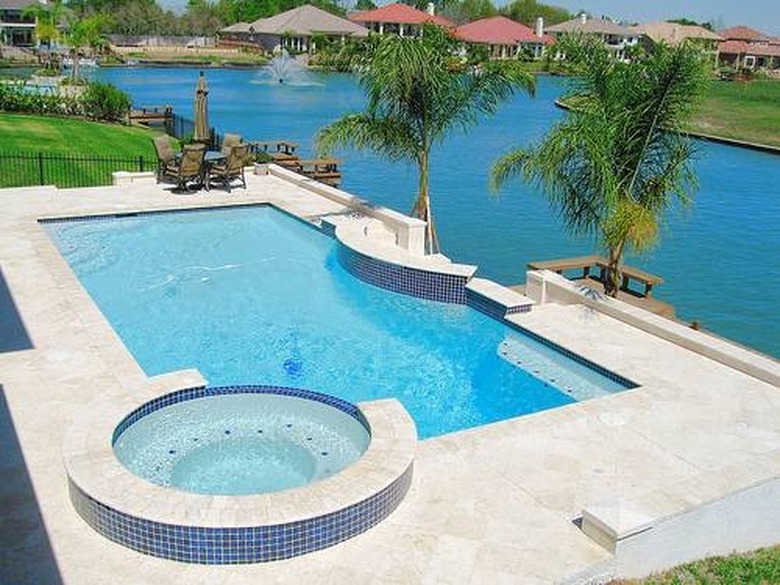How To Remove Algae Stains From A Concrete Pool
Algae stains on a concrete pool can be a disgusting mess. Algae grow in pools when certain conditions are present. For example, winds contribute to the production of algae-use-fertilizer.html)-use-fertilizer.html). When the spores fall into the pool, the sunlight and temperature allows the algae to grow. The amount of chlorine that you add to your pool does not necessarily keep algae away. When you drain your pool, you can remove the algae stains from the concrete. Algae stain removers like Olympic Mildew Check, Mason Select Concrete Cleaner and 30 Seconds Outdoor Cleaner clean algae stains and some protect from future outbreaks.
- Algae stains on a concrete pool can be a disgusting mess.
- When you drain your pool, you can remove the algae stains from the concrete.
Step 1
Purchase a new spray bottle or clean out an existing one thoroughly. Make sure that no other cleaner is present. Place a piece of masking tape on the bottle. Write "Algae Cleaner" on the masking tape using a permanent marker. Fill up half the bottle with the algae cleaner. This is only applicable if your cleaning product is a jug or bottle.
Step 2
Spray the algae product on the concrete. Start with a small area, for example 2 feet by 2 feet. Soak the area to cover the entire algae stain. Wait for roughly 4 minutes.
- Purchase a new spray bottle or clean out an existing one thoroughly.
- Place a piece of masking tape on the bottle.
Step 3
Brush the area with a scrubbing brush. Use a circular motion and then scrub in rows to rub the stain remover in thoroughly.
Step 4
Rinse the cleaner with the hose. Spray the concrete pool wall meticulously to eliminate the algae stain and cleaner. Repeat the cleaning procedure if any stains remain.
Remove Algae From Concrete
Algae thrives in moist, cool areas such as shaded walkways and home foundations. Go over the surface several times until most of the algae is lifted and only the sub-surface stains remain. Put on protective eyewear such as goggles. Combine 5 parts warm water and 1 part oxygen bleach in a non-metallic bucket, or combine 1 gallon water, 1/2 cup borax, 1/2 cup washing soda and 1 tablespoon dishwashing liquid in a non-metallic bucket. Use the oxygen bleach solution to treat the algae if plants are growing nearby because it is less likely to damage them. Rinse the area with the pressure hose as before, then brush off the excess liquid with a shop broom so the surface can dry off quickly. Brush the concrete vigorously with a shop broom each week to keep any newly formed algae from taking hold.
- Brush the area with a scrubbing brush.
- Use a circular motion and then scrub in rows to rub the stain remover in thoroughly.
Things Needed
- Spray bottle
- Masking tape
- Permanent marker
- Algae stain remover
- Scrubbing brush
- Hose
Warning
Read all directions and warnings on the container. Marking the spray bottle will prevent accidental misuse. Keep all cleaning products away from children.
Tip
Every time you drain your pool for cleaning, remove the algae stains.
References
- Royal Horticultural Society: Algae, Lichens, Liverworts and Moss on Hard Surfaces
- University of California Cooperative Extension: Moss and Algae in Lawns, Roofs and Walkways
- Chicago Tribune: Oxygen Bleach Removes Algae Without Toxicity
- Utah State University Cooperative Extension: 5 Cleanup Solutions for Your Home Exterior
